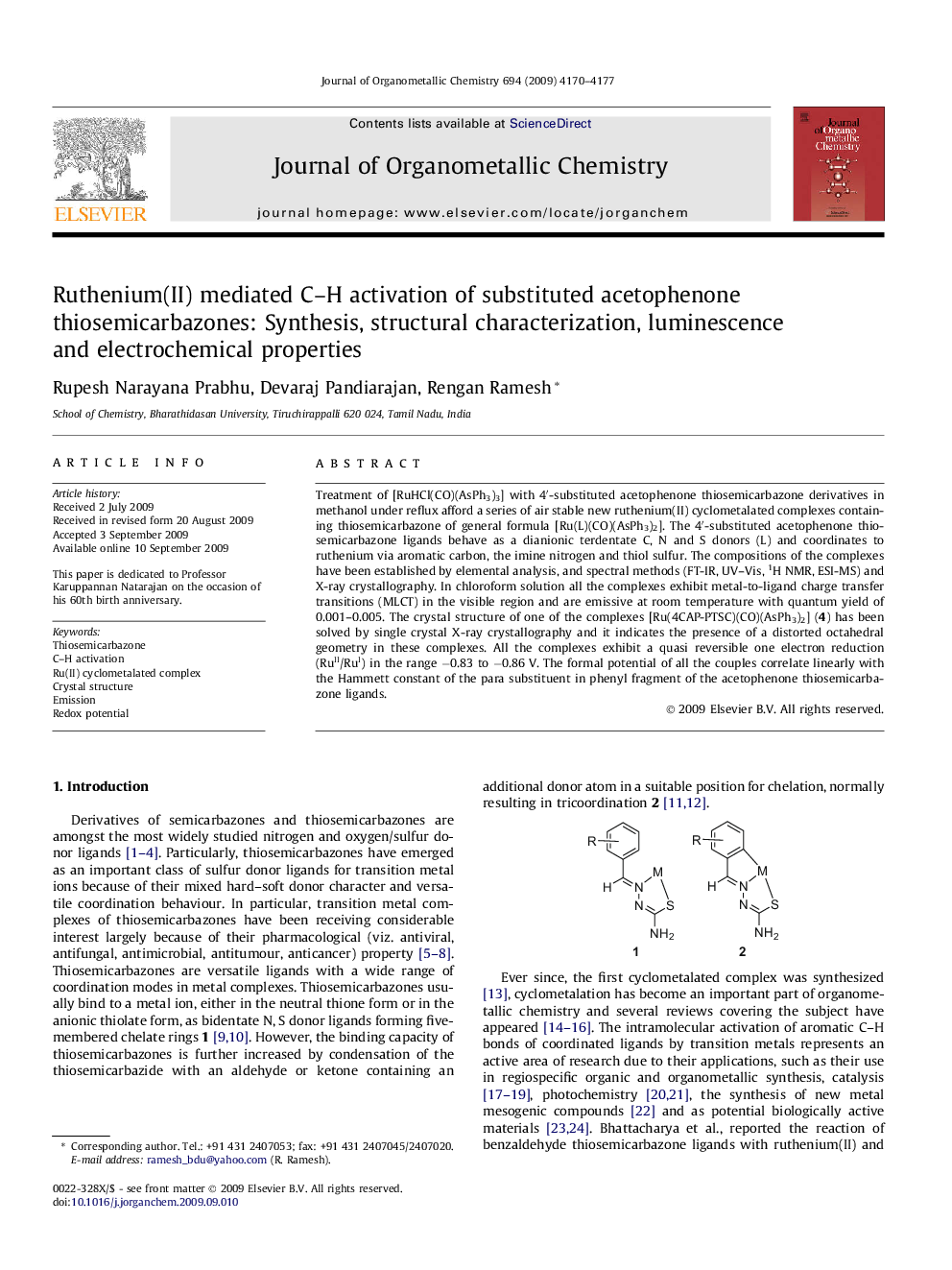| کد مقاله | کد نشریه | سال انتشار | مقاله انگلیسی | نسخه تمام متن |
|---|---|---|---|---|
| 1325147 | 977372 | 2009 | 8 صفحه PDF | دانلود رایگان |

Treatment of [RuHCl(CO)(AsPh3)3] with 4′-substituted acetophenone thiosemicarbazone derivatives in methanol under reflux afford a series of air stable new ruthenium(II) cyclometalated complexes containing thiosemicarbazone of general formula [Ru(L)(CO)(AsPh3)2]. The 4′-substituted acetophenone thiosemicarbazone ligands behave as a dianionic terdentate C, N and S donors (L) and coordinates to ruthenium via aromatic carbon, the imine nitrogen and thiol sulfur. The compositions of the complexes have been established by elemental analysis, and spectral methods (FT-IR, UV–Vis, 1H NMR, ESI-MS) and X-ray crystallography. In chloroform solution all the complexes exhibit metal-to-ligand charge transfer transitions (MLCT) in the visible region and are emissive at room temperature with quantum yield of 0.001–0.005. The crystal structure of one of the complexes [Ru(4CAP-PTSC)(CO)(AsPh3)2] (4) has been solved by single crystal X-ray crystallography and it indicates the presence of a distorted octahedral geometry in these complexes. All the complexes exhibit a quasi reversible one electron reduction (RuII/RuI) in the range −0.83 to −0.86 V. The formal potential of all the couples correlate linearly with the Hammett constant of the para substituent in phenyl fragment of the acetophenone thiosemicarbazone ligands.
Ruthenium(II) cyclometalated thiosemicarbazone complexes of the type, [Ru(L)(CO)(AsPh3)2], were synthesized and characterized. X-ray diffraction study confirms C, N and S coordination mode of ligands via C–H activation. All the complexes are emissive at room temperature and are redox active.Figure optionsDownload as PowerPoint slide
Journal: Journal of Organometallic Chemistry - Volume 694, Issue 26, 15 December 2009, Pages 4170–4177